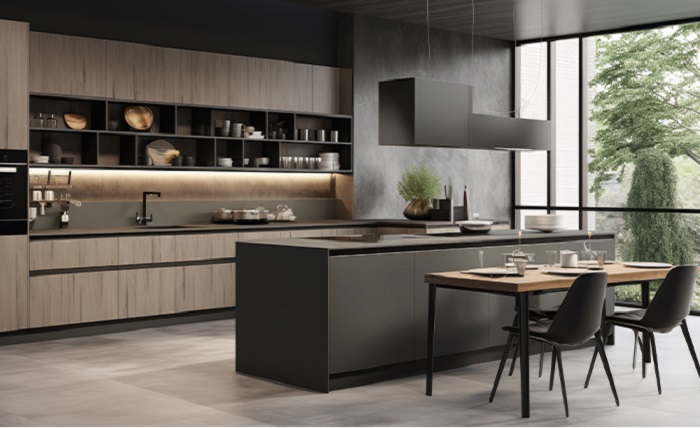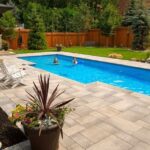The allure of outdoor kitchens has grown significantly, offering an immersive cooking experience that enhances social gatherings. However, the beauty of alfresco dining can quickly be overshadowed by safety concerns if not properly addressed. This blog will explore the critical importance of safety in outdoor kitchen design, ensuring your cooking and entertaining space is not only stylish but secure. You will discover various tips and strategies to create a safe environment, allowing you and your guests to relax and enjoy every moment.
Understanding the Appeal of Outdoor Kitchens
Outdoor kitchens have become a popular addition to homes across the globe. They offer a unique blend of functionality and enjoyment, making them a perfect space for entertaining. Families and friends gather around the grill, sharing stories and laughter while savoring delicious meals. The open-air environment provides a refreshing change from indoor cooking, bringing people closer to nature.
Beyond the social aspect, outdoor kitchens can also enhance the aesthetic appeal of your home. With a wide range of design options, they allow homeowners to express their creativity and personalize their cooking spaces. From rustic setups with natural stone to sleek modern designs with stainless steel appliances, the possibilities are endless. However, with these exciting opportunities comes the responsibility of ensuring safety is a top priority.
Why Safety Should Be at the Forefront
While the benefits of outdoor kitchens are plentiful, safety must always come first. An overlooked safety measure can lead to accidents, turning a pleasant gathering into a stressful situation. Fire hazards, slips, and trips are common risks that can easily be mitigated with proper planning and design.
Considering safety in the initial stages of your outdoor kitchen design helps prevent accidents. It also ensures longevity and functionality, allowing you to enjoy your outdoor space without worry. By prioritizing safety, you show your guests you care about their well-being, creating an environment where everyone feels comfortable and secure.
The Role of Proper Planning in Safety
Effective safety planning begins with thoughtful design. Start by evaluating the layout of your space. Ensure there is enough room for movement, especially around cooking appliances. Crowded spaces increase the risk of accidents, so aim for an open design that allows for easy navigation. Additionally, consider placing cooking areas away from high traffic zones to avoid collisions and spills.
Incorporating non-slip surfaces is another crucial element of safety planning. Outdoor kitchens are exposed to the elements, and rain can turn surfaces into slipping hazards. Opt for slip-resistant materials for flooring and countertops to minimize risks. This simple precaution can prevent injuries and keep your gatherings enjoyable.
Fire Safety Essentials for Outdoor Kitchens
Fire safety should be a primary concern in any outdoor kitchen. Install a fire suppressant system near your cooking appliances to quickly address any unexpected flames. This precaution can prevent small fires from becoming larger threats, protecting both people and property. Additionally, familiarize yourself and your family with how to operate the fire suppressant system effectively.
Proper ventilation is another critical factor in fire safety. Ensure grills and other cooking appliances are placed away from structures, trees, and flammable materials. Adequate spacing and ventilation reduce the risk of fires and help prevent smoke buildup, ensuring a comfortable atmosphere for your gatherings.
Electrical Safety Considerations
Electrical safety is often overlooked in outdoor kitchen design but is just as important. Weatherproof outlets and electrical connections are essential to protect against moisture and potential hazards. Cover outlets when not in use and ensure all electrical work is completed by a qualified professional to avoid dangerous faults.
Lighting should also be safely integrated into your design. Proper illumination ensures visibility during evening gatherings, reducing the risk of trips and falls. Opt for LED lighting, which is energy-efficient and emits less heat, further enhancing safety in your outdoor kitchen.
The Importance of Durable Materials
Selecting durable materials for your outdoor kitchen is vital for both safety and longevity. Outdoor environments can be harsh, with exposure to sun, rain, and temperature fluctuations. Choose weather-resistant materials for appliances, countertops, and cabinetry to withstand these conditions.
Durable materials not only extend the life of your outdoor kitchen but also maintain its safety features. For example, stainless steel is a popular choice for appliances due to its resistance to rust and heat, ensuring your cooking equipment remains safe and functional over time.
Incorporating Safety Features into Design
Incorporating safety features into your outdoor kitchen design adds an extra layer of protection. Consider installing motion-sensor lighting to automatically illuminate pathways, reducing the risk of accidents. This feature is especially useful for outdoor kitchens used frequently in the evenings.
Safety rails or barriers can also be integrated into the design to prevent falls, especially in elevated areas. These features should complement your overall aesthetic, providing safety without compromising style. By thoughtfully incorporating these elements, you create a harmonious and secure environment.
Regular Maintenance and Inspection
Regular maintenance is crucial to maintaining safety in your outdoor kitchen. Conduct routine inspections of your appliances, electrical connections, and surfaces to identify potential hazards. Address any issues promptly to prevent accidents and ensure your space remains safe for use.
Cleaning is another essential aspect of maintenance. Grease and debris can accumulate on cooking surfaces, increasing the risk of fires. Regularly clean your appliances and countertops to reduce hazards and keep your outdoor kitchen looking its best.
Educating Guests About Safety
While designing a safe outdoor kitchen is vital, educating your guests about safety practices is equally important. Inform them about any specific precautions they should take while using your space. This might include showing them the location of the fire extinguisher or explaining how to safely operate the grill.
By involving your guests in safety practices, you create a culture of awareness and responsibility. This proactive approach ensures everyone enjoys the gathering without worry, allowing you to focus on creating memorable experiences.
Conclusion
Creating a safe outdoor kitchen is an investment in both your home’s value and your loved ones’ well-being. By prioritizing safety in design and incorporating practical features, you can enjoy peace of mind while entertaining. Remember, safety is not just about preventing accidents; it’s about enhancing the overall experience for everyone involved. For further guidance on outdoor kitchen safety or to explore design ideas, consider consulting with a professional to help bring your vision to life.




